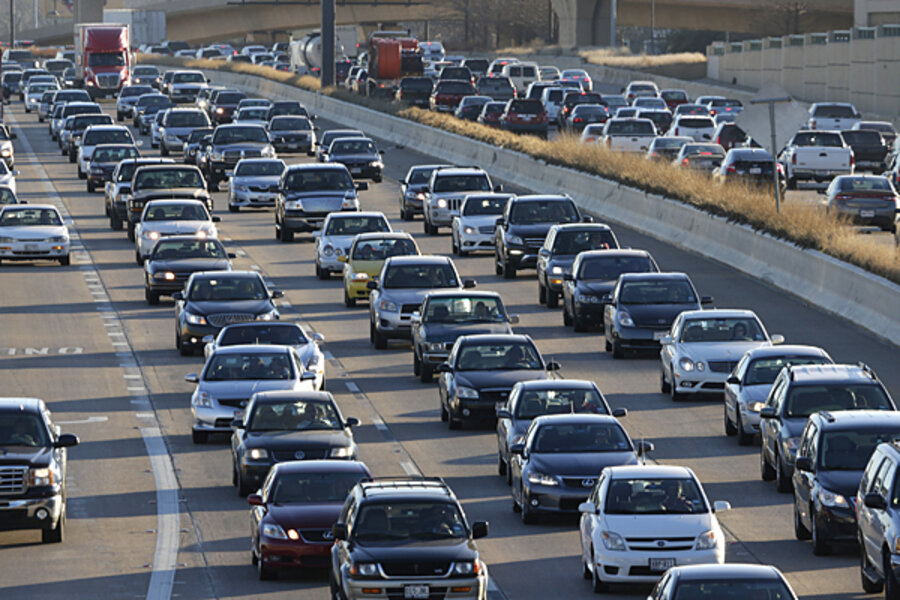The future of fuel-efficient, self-driving cars
Loading...
The not-so-distant future of driving will be first increasingly semi-autonomous and then fully automated, as technology to build self-driving cars gains traction, promising both safer driving and lighter-weight vehicles that save on gas.
The development of advanced driver assistance systems (ADAS) will first see some seemingly innocuous changes in the way we drive—from autonomous driving in traffic jams, parking and lane-changing assistance on highways and pedestrian detection cameras to predictive emergency braking. Essentially, the first semi-autonomous steps will free up hands to so a bit of illegal texting on mobile phones and keep us alert to avoid traffic accidents.
Audi's ADAS is getting increasingly personalized, with advanced systems taking into account how an individual driver operates, assessing his or her driving patterns and driving history. (Related article: Clarifying the Clean Energy Innovation v Deployment Debate)
In its parking assistance, Audi is working to be able not only to alert a driver to available parking spots in congested urban areas, but also to add a Big Brother element that would let a driver know when someone else’s parking meter has expired so they can have the car ticketed.
And if you aren’t paying attention, this advanced human-machine interface technology will snap you back into focus. When that fails, an adaptive cruise-control (ACC) system could be put into effect to keep drivers safe.
Of course, the idea of semi-autonomous and self-driving cars also raises some significant liability questions that will have to be addressed. Autonomous cars will give drivers the right to claim that they are not liable for traffic incidents, but determining who is liable will be a bit tricky. Responsibility will somehow have to be shared by the driver and the maker of the technology and the car. (Related article: Energyland: Rise of the Guardians)
The idea is gaining more ground also because it can tie in to the Obama administration’s alternative vehicle ambitions. These “self-driving” vehicles aim to prevent or correct driver error to the extent that future cars could be manufactured with much less mass, which in turn would mean burning less gasoline or rendering batteries more effective.
It’s not exactly early days for semi-autonomous driving advances. By the end of this decade—along with some of the driving tech Audi is working on, we should also see GM’s Cadillac division ((NYSE: GE) unveil its “Super Cruise” feature that will allow drivers to relinquish the wheel on the highway while their cars maintain lane alignment and even slow down or stop when other cars are in the way.
BMW, Volvo and Mercedes-Benz have also been working on similar technology for years, aiming for safe, more fuel-efficient driving.
But it’s really Google that’s got everyone’s attention, largely because of the high-tech association with this company. It’s made some serious gains towards the development of the self-driving car, but a report by Business Insider citing someone “close to the company” notes several problem areas. (Related article: The Darker Side of Renewable Energy)
Specifically, driving in snow is proving challenging because the snow covers the markers and visual cues that the autonomous sensor technology relies on to pilot a vehicle on its own. There also may be problems with new roads or changes in street names as well as with situations in which police are manually directing traffic. These are not, however, insurmountable challenges—simply glitches that will eventually be worked out.
To date, Google’s self-driving car has undergone more than 300,000 miles of testing. Its latest marketing scheme portrayed a blind man being driven about by the fully autonomous Google car, piloted by video cameras, radar sensors and a laser rangefinder.
The bottom line is that the semi-autonomous driving is already here—and the future will clearly see self-driving. According to Germany’s Continental tech supplier, we’re looking at fully automated driving by 2025.
Original source: http://oilprice.com/Energy/Energy-General/Self-Driving-Cars-by-2025.html







